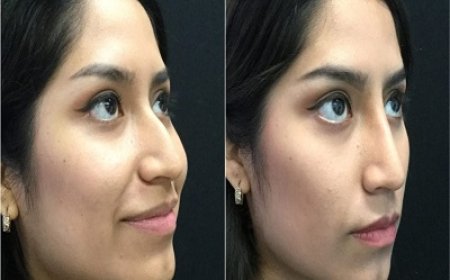Healthy vs Infected Wounds: What You Need to Know for Proper Care
Learn the key differences between a healthy vs infected wound. Discover signs, causes, and expert tips for proper wound care to promote faster healing and prevent complications.

Wounds are a part of lifewhether its a scraped knee, surgical incision, or injury from a chronic condition. While many wounds heal naturally over time, others can become infected and lead to serious health complications if not cared for correctly. Understanding the difference between a healthy vs infected wound is essential for anyone looking to promote faster recovery and avoid long-term damage.
In this guide, well break down the differences between healthy and infected wounds, the warning signs to watch for, and essential care tips that help support healing and prevent infection.
What Is a Wound?
A wound is any break in the skin or underlying tissues caused by injury, surgery, or chronic medical conditions. Wounds can be classified into several types:
-
Acute wounds: Caused by trauma or surgery and generally heal within a predictable timeframe.
-
Chronic wounds: Often due to underlying conditions like diabetes or poor circulation; these wounds heal slowly or not at all.
-
Open wounds: Visible skin break (e.g., cuts, abrasions).
-
Closed wounds: No open break but damage occurs beneath the surface (e.g., bruises, hematomas).
Regardless of the cause, every wound needs proper care. But how can you tell if a wound is healing well or heading toward infection? Lets explore the key differences.
Healthy vs Infected Wound: Understanding the Differences
The body is naturally equipped to heal wounds through a complex yet efficient process. A healthy wound progresses through four well-defined stages:
-
Hemostasis Blood vessels constrict and clotting begins to stop bleeding.
-
Inflammation The immune system fights bacteria and removes damaged cells.
-
Proliferation New tissue and blood vessels start to form.
-
Maturation The wound strengthens and forms a scar over time.
When any of these stages are disrupted by bacteria or other pathogens, the wound may become infected, slowing healing and increasing health risks.
Signs of a Healthy Wound
A wound thats healing properly typically shows the following signs:
1. Mild Redness and Swelling
Slight redness and swelling are normal during the inflammatory phase and should decrease over time.
2. Clear or Slightly Yellow Drainage
A small amount of fluid (called exudate) is expected and indicates the bodys natural cleansing process.
3. New Tissue Formation
You might see granulation tissuepink or red, bumpy tissuewhich is a positive sign of new skin growth.
4. Reduction in Pain
Pain should subside gradually over a few days. Persistent pain may be a red flag.
5. No Foul Odor
A healthy wound is typically odorless.
6. Scab Formation
A protective scab or covering helps seal the wound from external bacteria.
Signs of an Infected Wound
A wound becomes infected when bacteria enter and overwhelm the bodys natural defenses. Infections can delay healing and sometimes lead to serious complications.
Here are common indicators of an infected wound:
1. Increased Redness and Swelling
Redness that spreads outward or becomes more intense could indicate infection.
2. Warmth Around the Area
Infected wounds often feel hot to the touch due to inflammation.
3. Thick, Discolored Drainage
Pus thats green, yellow, or foul-smelling is a classic sign of infection.
4. Persistent or Worsening Pain
Pain that intensifies instead of decreasing over time is a warning sign.
5. Fever or Chills
Systemic symptoms like fever suggest the infection may be spreading.
6. Wound Deterioration
If the wound appears to be growing larger, becomes dark or necrotic, or fails to form new tissue, it may be infected.
What Causes a Wound to Become Infected?
Several factors can lead to wound infections, including:
-
Poor hygiene or improper cleaning
-
Foreign objects or debris in the wound
-
Contaminated dressings or tools
-
Underlying health conditions like diabetes or vascular disease
-
Weakened immune system
-
Smoking, which reduces circulation and oxygen supply
Understanding these risk factors can help you take proactive steps to prevent infection.
How to Care for a Wound Properly
Proper wound care can make the difference between smooth healing and dangerous complications. Follow these guidelines for effective wound management:
1. Clean the Wound Immediately
Use sterile saline or clean water to rinse the area. Avoid harsh antiseptics like hydrogen peroxide unless directed by a doctor.
2. Apply an Antibiotic Ointment
Use over-the-counter options like Neosporin to help prevent infection.
3. Cover with a Sterile Bandage
Keeping the wound covered protects it from bacteria and dirt.
4. Change Dressings Regularly
Replace the dressing at least once daily or whenever it becomes dirty or wet.
5. Avoid Picking or Scratching
Let the wound scab and heal naturally without interference.
6. Monitor for Warning Signs
Check the wound daily for any signs of infection or delayed healing.
When to Seek Medical Attention
Not all wounds require professional treatment, but in certain situations, seeing a doctor is essential. Seek immediate care if:
-
You notice pus or foul-smelling discharge
-
The wound is not healing after 710 days
-
Redness continues to spread or darken
-
You develop a fever, chills, or body aches
-
The wound is deep, large, or caused by a dirty object
-
You have underlying health issues (e.g., diabetes, poor circulation)
Medical intervention may involve wound cleaning, debridement, antibiotics, or even surgical repair in severe cases.
Special Considerations for Chronic Wounds
Some wounds, like diabetic ulcers or pressure sores, are classified as chronic because they dont follow a normal healing pattern. These wounds require specialized treatment:
-
Advanced dressings that manage moisture and promote tissue regeneration
-
Negative pressure wound therapy (wound vacs)
-
Hyperbaric oxygen therapy for improved oxygen delivery to tissues
-
Wound care specialists who develop personalized treatment plans
If you or a loved one has a wound that wont heal, consult a specialist as soon as possible.
Tips to Promote Healthy Wound Healing
Here are additional tips to improve healing and reduce the risk of infection:
-
Stay hydrated Water supports every stage of healing.
-
Eat a balanced diet Focus on protein, vitamins A and C, and zinc.
-
Avoid smoking Smoking restricts blood flow and delays tissue repair.
-
Manage underlying conditions Keep conditions like diabetes and high blood pressure under control.
Conclusion: Know the Signs, Protect Your Health
Understanding the difference between a healthy vs infected wound empowers you to take the right steps toward healing. While most minor wounds heal on their own, an infection can quickly turn a small injury into a major concern.
Pay attention to how your wound looks, feels, and progresses. Early detection of infection and proper care can mean faster healing, fewer complications, and peace of mind. Whether you're treating a cut at home or recovering from surgery, knowing what to look for and how to act can make all the difference.


































